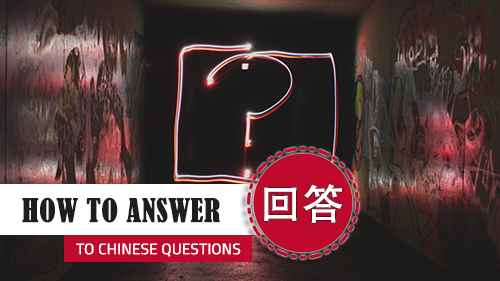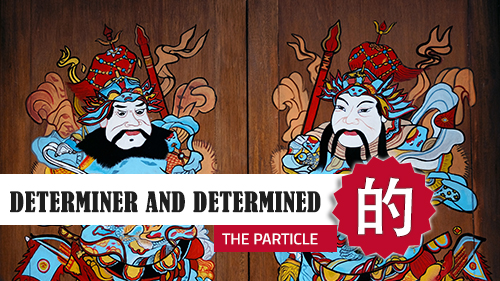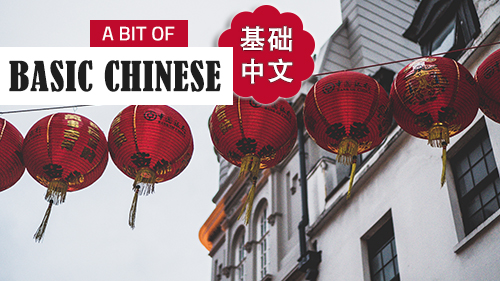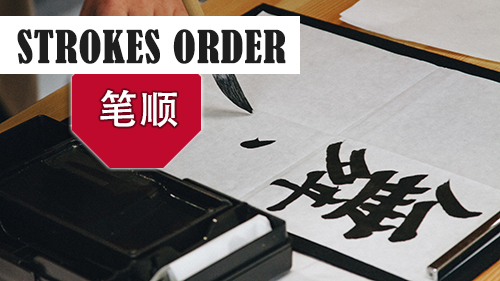Lessons
When I started studying Chinese at an evening course in 2011, it was love at first sight. Once the course ended, even if I was told that it would have been almost impossible, I continued to study it on my own buying several textbooks, watching tons of tv series in original language and keeping in touch with native guys through socials and letters, that gave a huge boost to my proficiency level of Chinese.
In this section I want to offer some lessons about linguistic and grammatical aspects of the Chinese language, hoping to arouse your curiosity and get you to become interested in this wonderful language.
-
The 是……的 construction

After learning more in details the use of the verb 是 in the previous lesson, let’s see now a construction in which this verb is used as an emphasis marker (EMP) together with the modal particle (MOD) 的, in order to give certainty to the sentence. Everything we want to emphasize has to be placed in between these two words 是 and 的, even though the verb 是 is often omitted in affirmative sentences.
-
The difference among 是, 有 and 在

In this lesson we will learn three Chinese verbs, that sometimes can be confused with each other: 是 (shì), 有 (yǒu) and 在 (zài). The verb 是 “to be” acts as the copula and it is used to connect the subject to the nominal predicate, only in case of nouns, because as we already know Chinese adjectives don’t need the verb “to be”, as they already imply a verbal meaning. 是 can also be used when we want to emphasize an element of the sentence.
-
How to answer to Chinese questions

We have already learned the three main ways to make a Chinese question. If you have any doubt about it go to The interrogative sentence to revise a little. The title of this lesson may sound a little weird, but it is a topic that should be clarified. In fact in Chinese, there is not a general “yes” or “no”, as in English. Everything depends on the question we have been asked and, usually, the answer is made by repeting the verb used in the question.
-
The quantifiers

In the previous lessons, the abbreviation QU, which stands for “quantifier”, often occurred in the examples. The quantifier, or measure word, is a word that has to be placed between a number and a name and it defines the category to which the noun belongs. This is a part of Chinese grammar that doesn’t exist in European languages, but it can be explained with a couple of examples. A pair of trousers (to indicate an object that is used in pairs)
-
Determiner and determined

In some examples in the previous lesson The interrogative sentence there was a particular character: 的 (de). For example, in the sentence “How do you write your name?”, which in chinese is expressed as “你的名字怎么写?”. This structural particle is perhaps one of the most used characters in Chinese language and it’s the one that defines the relationship between determiner and determined. In Chinese, everything that defines something (be it an adjective, any specification, a possessive or even a full sentence) should always be placed before the word to which it relates and linked to it with the use of this particle.
-
The interrogative sentence

We already know that the structure of the chinese sentence is SVO (subject-verb-object) and, unlike other languages, interrogative sentences are formed in the same way. There are three main ways to form a question. THE INTERROGATIVE PARTICLE 吗 As already stated in the lesson A bit of basic Chinese, this particle is placed at the end of a sentence to form a question. This is because in ancient Chinese, since there was no question mark, it was necessary to have something that would differ the affermative sentence from the interrogative one.
-
The intensifier 很 and Chinese adjectives

At the end of the previous lesson we’ve learnt the sentence 我很好, which can be translated into “I’m fine.” Per se, the adverb 很 (hěn) means “very”, but it often acts as an intensifier, whose translation is not needed. In Chinese, adjectives are called predicate adjectives, as they also imply a verbal meaning. Thus, if one wants to say the sentence “she is clever”, the verb “to be” does not appear because it is already enclosed in the adjective.
-
A bit of basic Chinese

After discussing the more theoretical, but essential lessons about Chinese language, let’s learn some basic expressions. A: 你 好! Nǐ hǎo! B: 你 好!我 叫 李娜,你 呢? Nǐ hǎo! Wǒ jiào Lǐnà, nǐ ne? A: 我 叫 小玉。 Wǒ jiào Xiǎoyù. B: 你 好 吗? Nǐ hǎo ma? A: 我 很 好。谢谢。 Wǒ hěn hǎo. Xièxiè. 你好 (literally “you-good”) means “hello”. It’s the greeting form you will find in textbooks, but in real life 你好 is generally used between persons who don’t know each other and meet for the first time.
-
The strokes order

Chinese people seek harmony everywhere, even in writing, to the extent that calligraphy in China is considered a real art. For this reason, in order to be able to properly write a character it is necessary to know the writing order of its strokes, as to say the sequence according to which each stroke must be written. Besides, it is important to take into account the proportions of the strokes and to imagine the character as written into a hypothetical square.
-
The six principles of the Chinese writing

As you may already know Chinese language doesn’t have an alphabet and, even though quite often a word can consist of two or more characters, Chinese is per se a monosyllabic language in which each sign has its own meaning. Depending on their structure Chinese characters can be distinguished in what is known as “the six principles of Chinese language” or 六书 (liùshū): The pictograms or 象形 (xiàngxíng – literally “shape”), are characters that resemble the shape of the objects they represent and are the most ancient corpus of Chinese characters.